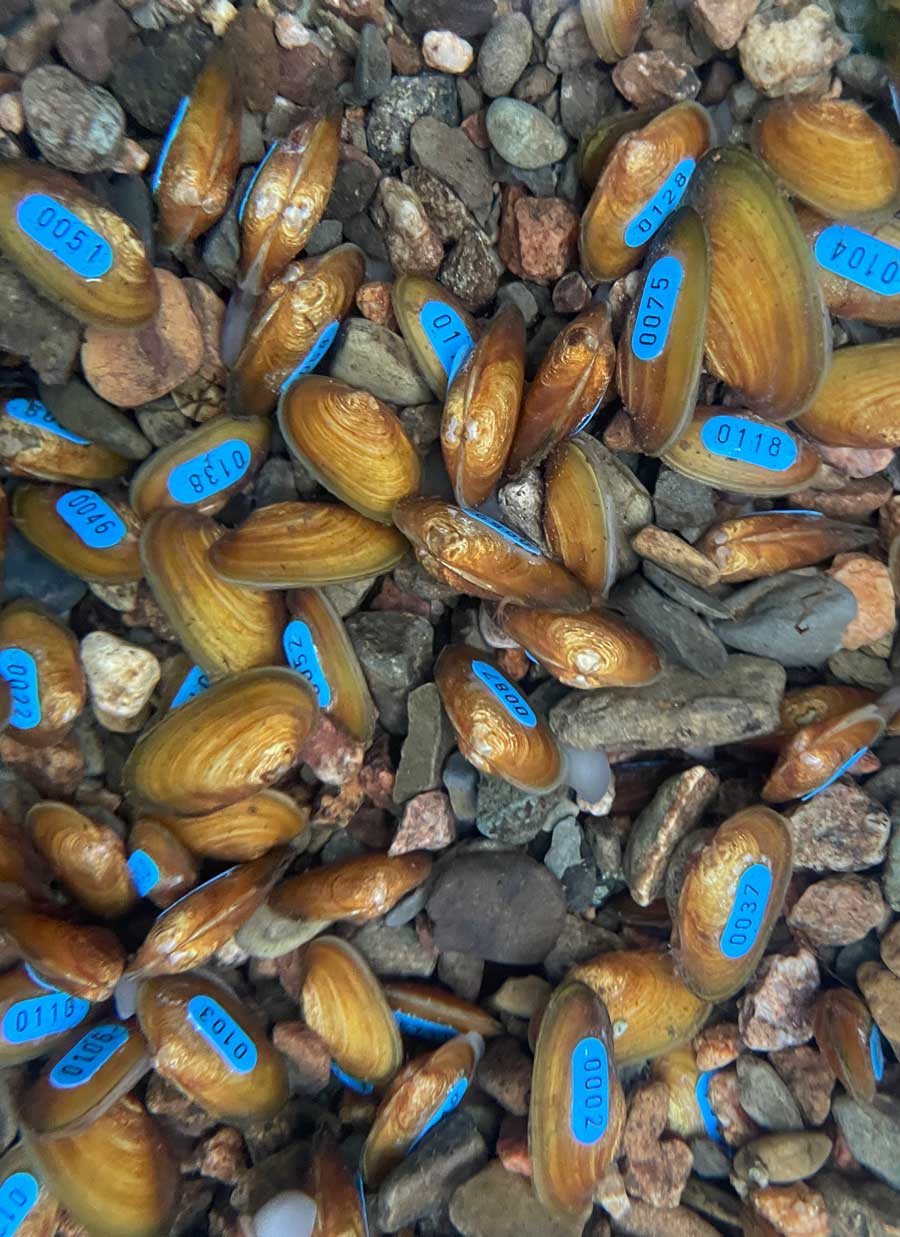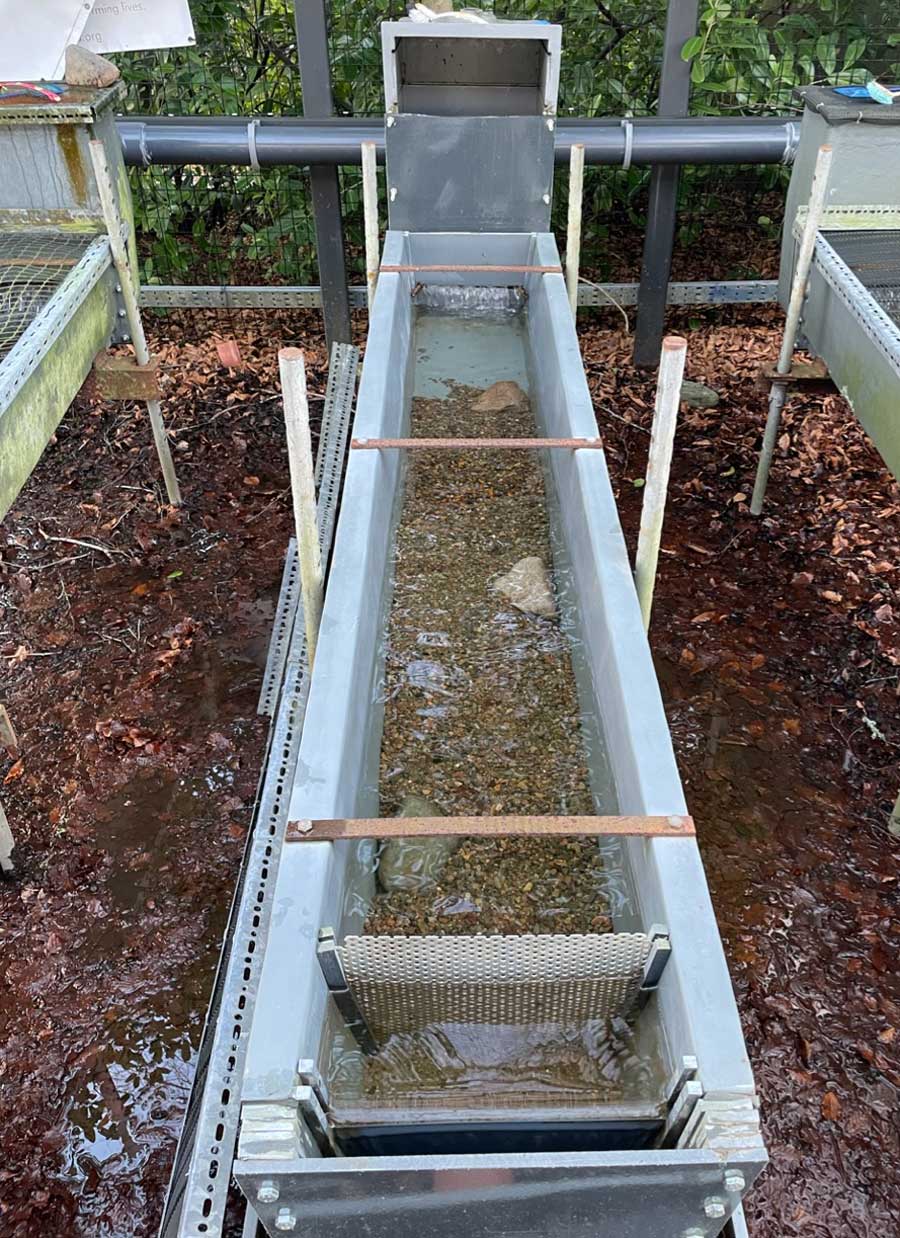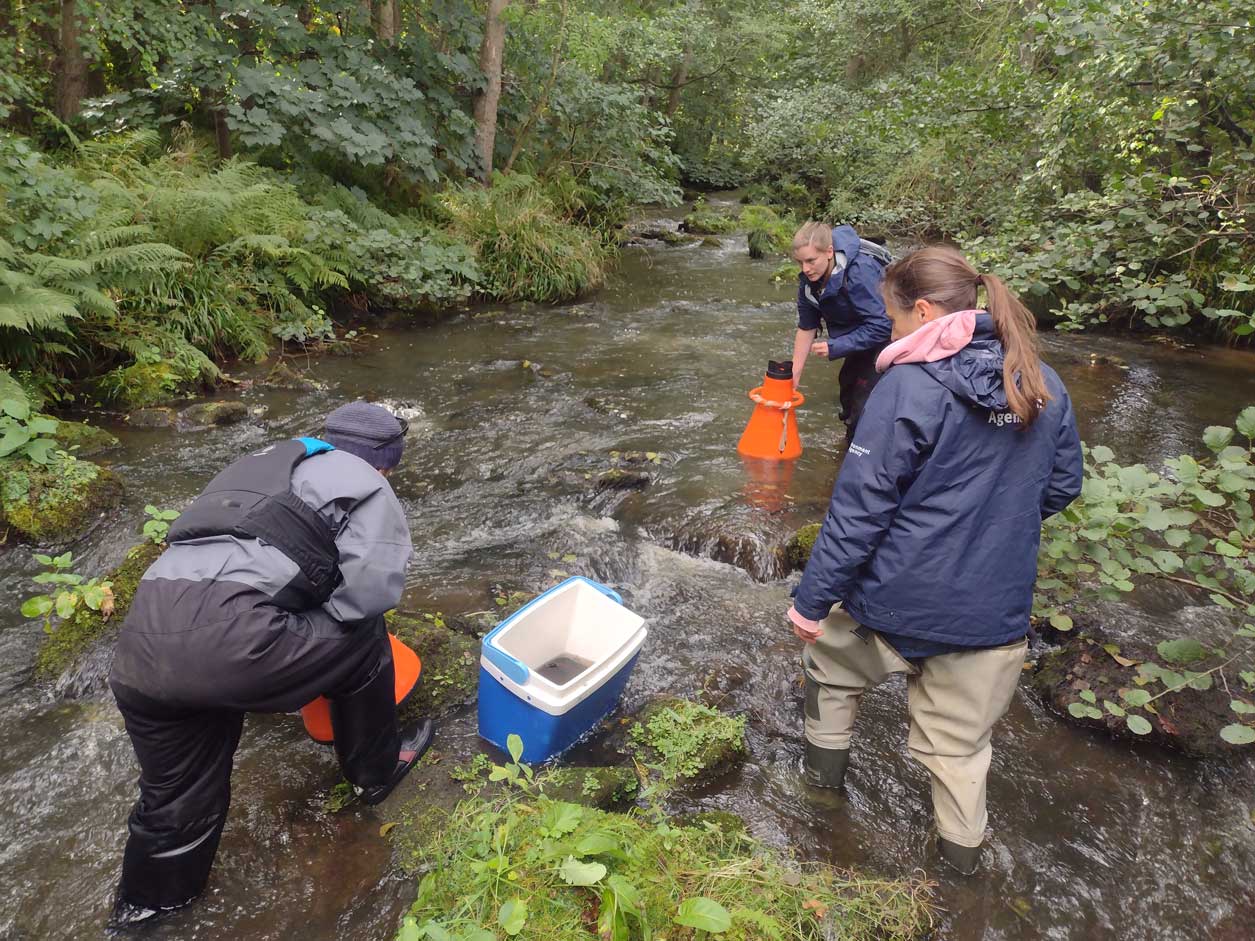Freshwater pearl mussels
The River Esk is home to Yorkshire’s last surviving population of the endangered freshwater pearl mussel, and one of only 7 rivers nationally to support this fascinating species. Their decline in number is largely due to habitat loss, water pollution and reduced numbers of their host fish species, Atlantic salmon and brown trout. The River Esk & Coastal Streams Partnership has been working together since 2014 to restore and protect the Esk’s remaining freshwater pearl mussels.
Lifecycle of the mussel
The freshwater pearl mussel has a complex life cycle that begins with the release of fertilized eggs by adult females in the spring.
The eggs hatch into tiny larvae called glochidia that attach themselves to the gills of freshwater fish, where they live harmlessly for several months before falling to the river bottom, developing into juvenile mussels amongst the gravel bed.
As the juveniles grow into adults, they release eggs or sperm into the watercourse to begin the life cycle anew. The freshwater pearl mussel's dependence on Atlantic salmon and sea/brown trout makes it very vulnerable and highlights the need for protecting freshwater habitats and gravel beds and reducing the impact from in-channel modifications such as weirs, culverts, and road fords.

Captive breeding programme
We are working in partnership with the Freshwater Biological Association who have been leading on a captive breeding programme for many years. Based at specialist facilities in Windemere, the programme has successfully produced 7-year+ juveniles that are ready to release into the Esk catchment.


Juvenile release programme
Now that we have juvenile mussels ready to be re-homed to their natural environment, the Partnership has been working hard on scoping out potential release sites. Over the next years, we will be looking for sites across the catchment that are able to support the young mussels. Working with Natural England, the Freshwater Biological Association and the Environment Agency, we hope to trial their release across these sites in coming years.

Restoring the river
Before we are able to release the captive bred juveniles into the catchment, we need to make sure it’s in good enough condition to support them. Restoring rivers for freshwater pearl mussels requires a combination of habitat restoration, water quality improvement, monitoring and research, and importantly, collaboration between different organisations. By working together, we can help to protect this important and endangered species, whilst restoring the health of our freshwater ecosystem.
